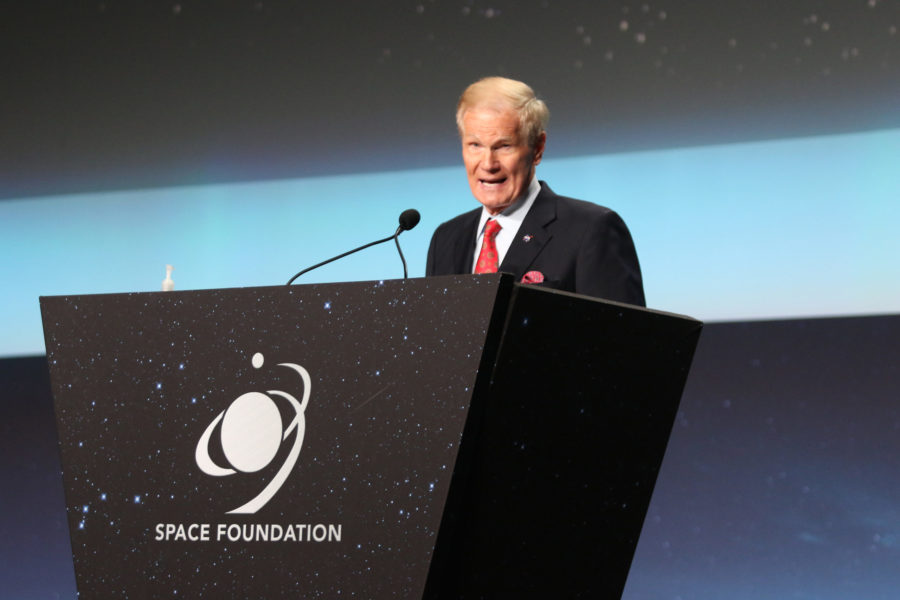Colorado Springs, Colo.—Low-earth orbit is too crowded, and not only with satellites from around the world, but also with debris created by “irresponsible” spacefaring nations, NASA administrator Ben Nelson said when describing the civilian agency’s greatest shared threat with the Space Force.
“Space is a big place, but the biggest risk to all of our satellites right now is the space junk,” Nelson said at the Space Symposium in Colorado Springs, Colo.
“We’ve had irresponsible folks that have launched and blown up assets and there are thousands of pieces of space junk that are flying around at 17,500 miles an hour,” he said referring to a 2007 Chinese anti-satellite test of a ground-based missile. “They’re in that altitude range where our space station is, indeed where the Chinese space station is as well.”
Nelson declined to respond specifically to the threat that may now exist when military payloads share space with commercial and satellite payloads. He instead focused on areas of cooperation between the civilian and military space organizations.
“There are many things that we do together,” he said, describing deconfliction of launches at the newly renamed Cape Canaveral Space Force Station, Fla., where both commercial and military launches occur. “There’s a lot that the Space Force and NASA do to work together, all with the common goal of having [uninhibited] exploration of space.”
“Often, the Space Force, for launching defense payloads are using rockets that were developed for NASA,” he said, referring to the high demand for monthly Atlas V launches.
Bradley Cheetham, CEO of commercial venture Advanced Space, a small business highlighted by Nelson, told Air Force Magazine that sometimes Space Force and NASA are at the same table when he is discussing new capabilities.
“What we can do to help a commercial company optimize a constellation of low Earth orbit satellites for communications, that same capability can help the national security mission figure out how to deploy sensors for different coverages they want,” he said.
Cheetham said the NASA Capstone mission to test a planned lunar orbiter will provide valuable cislunar information for the Defense Department.
“That is the high ground of space, right?” he said. “So, when you’re above geo[stationary orbit], everything that is a traditional orbit that we use is below you.”
Advanced Space has information sharing agreements with Space Force, and he has thus far noticed fluid coordination among civilian and military space.
As for where the Space Force-NASA relationship will go in the coming years, Nelson said it’s anybody’s guess.
“The Space Force is evolving,” he said. “So just give it some time and see how it evolves.”

